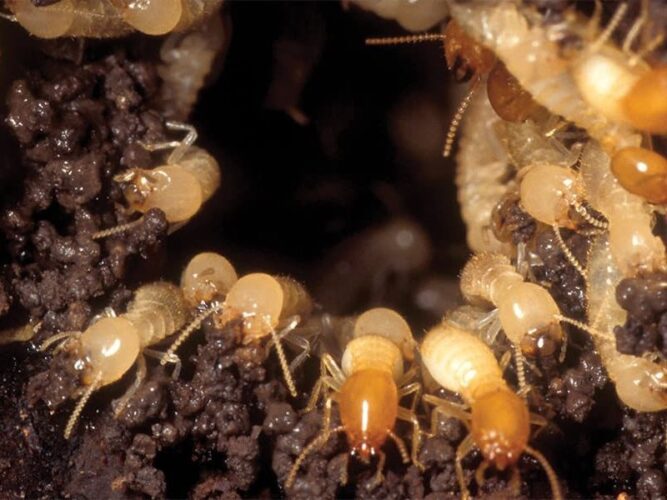Termites, often referred to as “silent destroyers,” can wreak havoc on your property if left unchecked. These wood-destroying insects can cause significant damage to homes and buildings, leading to expensive repairs.
However, with proactive measures and proper maintenance, you can create a termite-free environment and protect your property. In this article, we will explore essential tips and strategies to keep termites at bay.
Understanding Termite Behavior
Before delving into preventative measures, it is crucial to understand termite behavior. Termites thrive in moist environments and are attracted to wood, cellulose materials, and even paper.
They build elaborate colonies and can tunnel through the structure of your property undetected. By knowing their behavior patterns, you can effectively implement preventive strategies.
Regular Inspections
Regular inspections are a fundamental aspect of maintaining a termite-free environment. Conduct thorough inspections of your property, both indoors and outdoors, to identify any signs of termite activity.
Look for hollow-sounding wood, discarded wings, mud tubes, or termite droppings, also known as frass. If you notice any of these indicators, it’s crucial to take immediate action.
Remove Wood-to-Ground Contact
Termites can easily access your property through direct wood-to-ground contact. Ensure that there is no contact between soil and wooden structures such as fences, decks, or exterior siding.
Use concrete or metal barriers to create a gap between the ground and wooden elements. This simple step can significantly reduce the risk of termite infestation.
Proper Ventilation and Moisture Control
Termites thrive in damp environments. To create a termite-free environment, it’s essential to maintain proper ventilation and control moisture levels.
Ensure that your property is adequately ventilated, particularly in areas prone to humidity, such as basements and crawl spaces. Fix any plumbing leaks, repair roof leaks promptly, and divert water away from the foundation with properly functioning gutters and downspouts.
Regular Maintenance of Landscaping
Landscaping can inadvertently attract termites if not properly maintained. Follow these guidelines to minimize the risk:
a. Trim trees and shrubs: Keep vegetation trimmed and away from the sides of your property. Overgrown branches can serve as bridges for termites to access your home.
b. Remove dead wood: Eliminate dead trees, stumps, or decaying wood from your property, as these can serve as a food source and potential termite harborages.
c. Proper mulching: Use termite-resistant materials like gravel or rubber mulch, or keep organic mulch at least 6 inches away from the foundation of your home.
Treat Wooden Structures
Wooden structures, such as decks, fences, and outdoor furniture, are susceptible to termite damage. Protect these items by applying a wood preservative or a termite-resistant treatment.
Regularly inspect and maintain these structures to ensure their integrity and avoid providing termites with easy access to your property.
Professional Pest Control
While taking preventive measures is crucial, it’s also advisable to enlist the services of a professional pest control company.
They have the expertise, tools, and knowledge to thoroughly inspect your property for termites and implement targeted treatments if necessary. Regular professional inspections can provide an added layer of protection against termite infestation.
Educate Yourself and Spread Awareness
Education is key to maintaining a termite-free environment. Learn more about termites, their behavior, and prevention methods. Share this knowledge with friends, neighbors, and community members to create a collective effort in termite prevention.
Awareness can help identify infestations early and prevent the spread of termites in your area.
Conclusion
Preventing termite infestations and maintaining a termite-free environment requires a proactive approach. By understanding termite behavior, conducting regular inspections, controlling moisture levels, implementing preventative measures, and seeking professional assistance, you can significantly reduce the risk of termite damage to your property.
Remember, early detection and swift action are vital in protecting your home from these destructive pests.

